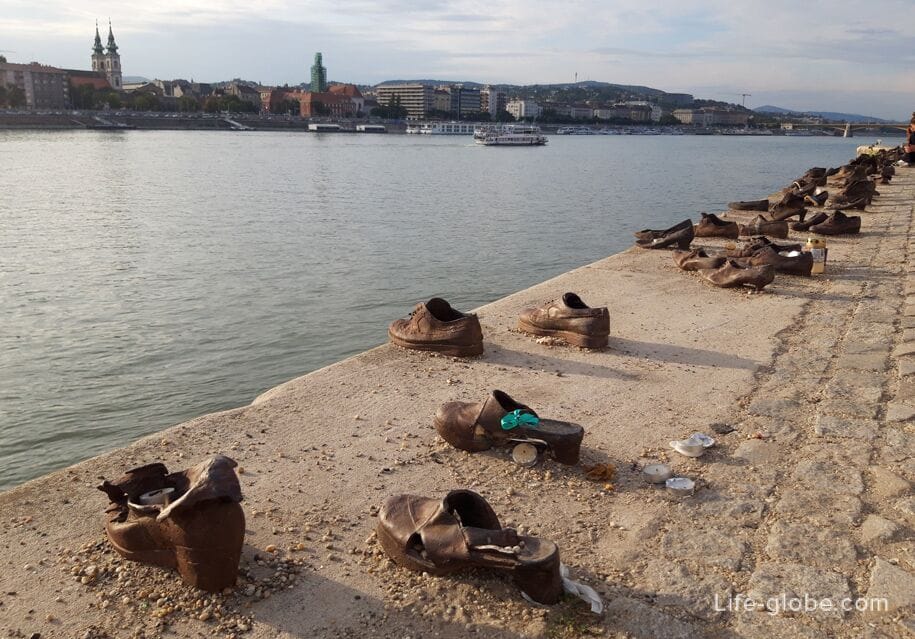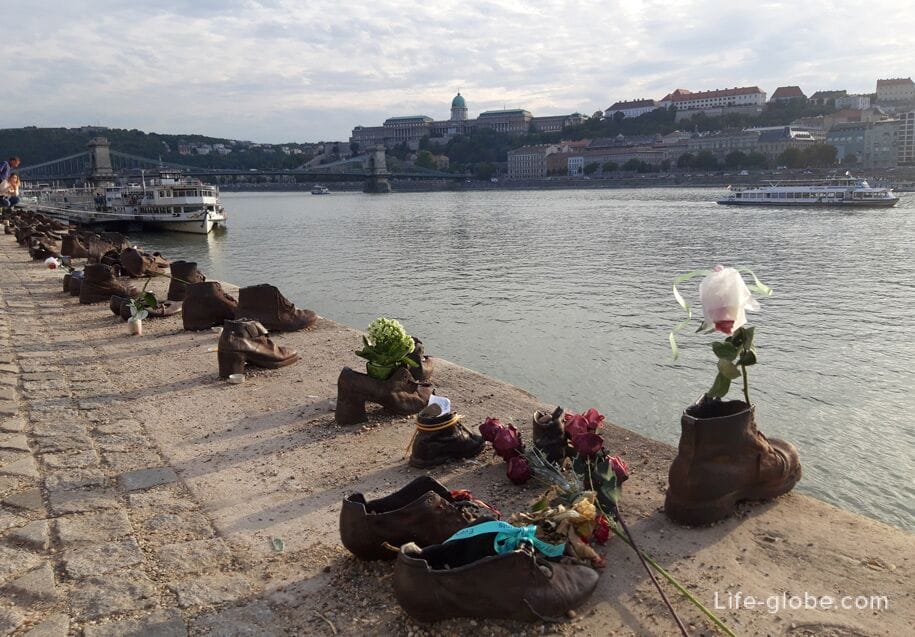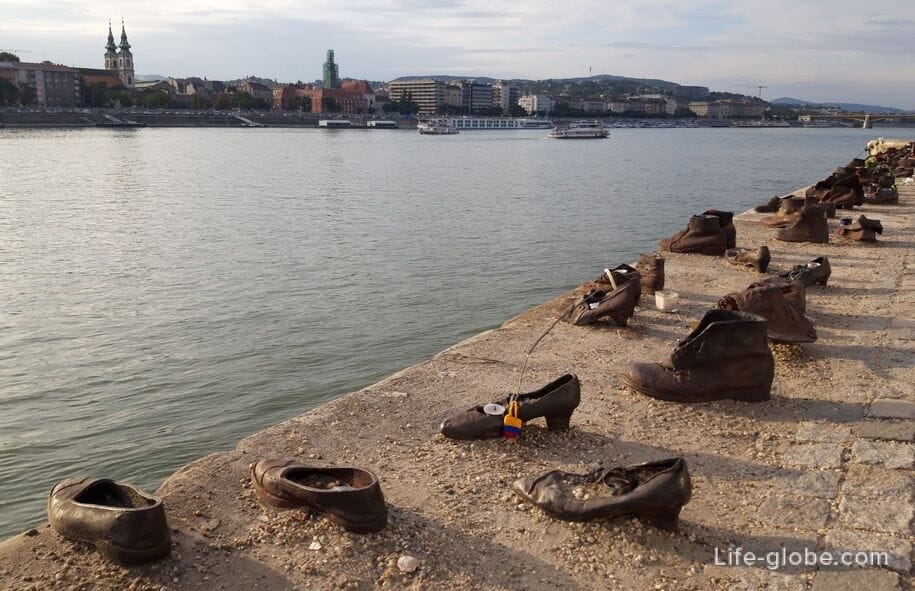
Shoes on the Danube Embankment (Cipők a Duna-parton, in the translation "Shoes on the Danube") is the most soulful, emotional and recognizable monument in Budapest.
Shoes on the Danube embankment were included in the list of 18 "The most piercing monuments of the world."
Sculpture of "Shoes on the Danube promenade" is a memorial erected in memory of the victims of the Holocaust, initially consisting of 60 cast-iron Shoe sample shoes 1940-ies and is dedicated to the memory of those who were shot on the banks of the Danube by the Hungarian Nazis.
In Budapest, at the end of World War II, members of the Hungarian Nazi party "Crossed Arrows" carried out mass executions of Jews of all ages. In order not to take time for the removal and burial of bodies, the execution was carried out on the river Bank. The people who were brought in were ordered to take off their shoes, after which they were shot, and the bodies were carried away by the water of the river. The shoes of the dead went on sale or was used by the Nazis for their own needs.
The authors of the memorial are Can Togay and Gyula Pauer.
The memorial was opened in 2005 to mark the 60th anniversary of the Holocaust, and since then, he silently recalls the tragedy that Budapest will never forget.
Sculptures of shoes have different types (styles), as well as accessories: men's, women's, children's - shoes, sandals, old worn shoes, children's sandals and boots.
Flowers are brought to the monument, lamps are lit, ribbons are tied.
A long bench with commemorative plaques is installed next to the shoes.




The memorial is located on the Pest (eastern) bank of the Danube, in the very center of the embankment, near the building of the Hungarian parliament.